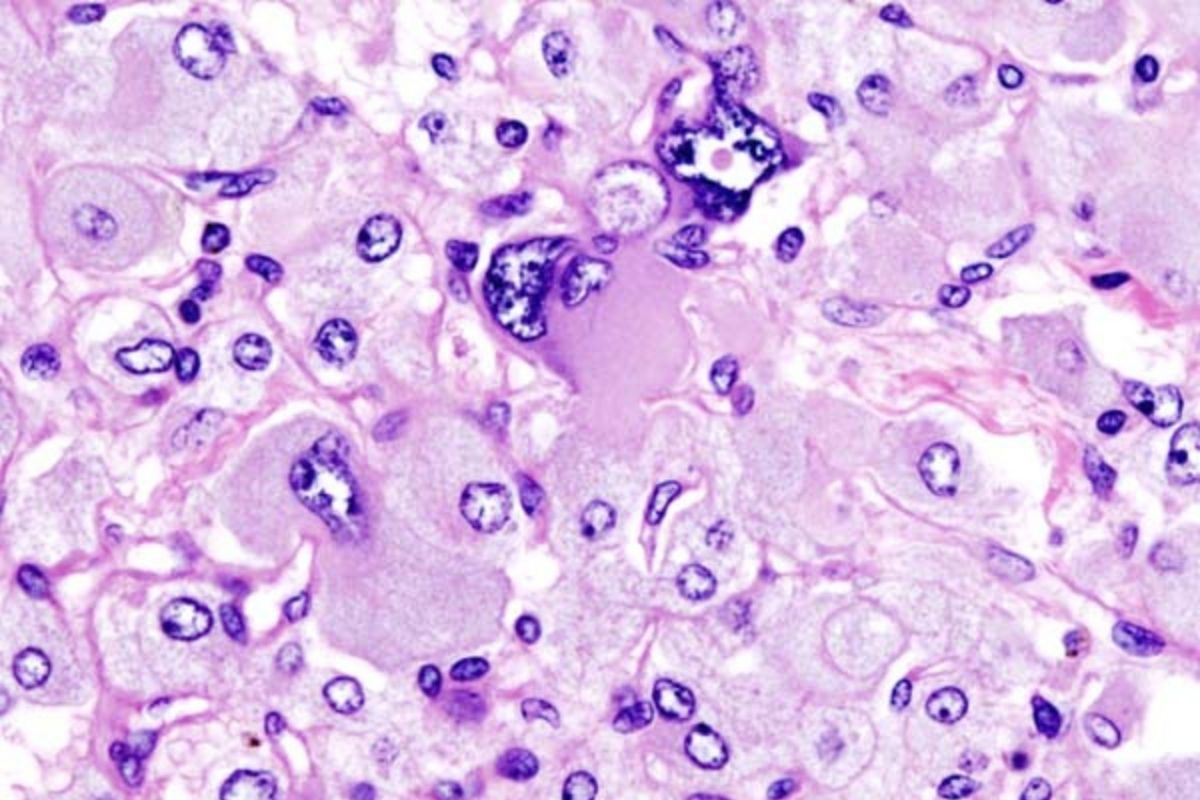
Pheochromocytoma is a rare tumor that develops in the adrenal glands, which sit atop your kidneys. These tumors can cause the glands to produce too much adrenaline, leading to high blood pressure, headaches, sweating, and rapid heartbeats. Neurofibromatosis type 1 (NF1) is a genetic disorder that causes tumors to form on nerve tissue. When pheochromocytoma occurs as part of NF1, it adds another layer of complexity to the condition. Understanding the connection between pheochromocytoma and NF1 is crucial for managing symptoms and improving quality of life. This post will provide 25 essential facts about pheochromocytoma within the context of NF1, helping you grasp the key aspects of this rare but impactful condition.
Key Takeaways:
- Pheochromocytoma is a rare tumor that can cause high blood pressure and other symptoms. It's usually not cancerous but needs early detection and treatment for effective management.
- People with Neurofibromatosis Type 1 (NF1) have a higher risk of developing pheochromocytomas. Early genetic testing and regular check-ups are important for timely diagnosis and treatment.
What is Pheochromocytoma?
Pheochromocytoma is a rare tumor that develops in the adrenal glands. These glands are located above the kidneys and produce hormones that regulate various bodily functions. Pheochromocytomas can cause a variety of symptoms due to the excess production of hormones like adrenaline.
- Pheochromocytomas are usually benign, meaning they are not cancerous.
- These tumors can occur at any age but are most commonly diagnosed in people between 30 and 50 years old.
- Pheochromocytomas can cause high blood pressure, which may be difficult to control with standard medications.
- Symptoms often include headaches, sweating, and rapid heart rate.
- The condition can be life-threatening if not treated, due to the risk of severe hypertension and heart complications.
Connection Between Pheochromocytoma and Neurofibromatosis Type 1 (NF1)
Neurofibromatosis Type 1 (NF1) is a genetic disorder that causes tumors to form on nerve tissue. There is a significant connection between NF1 and pheochromocytoma.
- About 1-5% of people with NF1 develop pheochromocytomas.
- NF1 is caused by mutations in the NF1 gene, which can also influence the development of pheochromocytomas.
- People with NF1 who develop pheochromocytomas often experience more severe symptoms due to the combined effects of both conditions.
- Genetic testing can help identify individuals with NF1 who are at risk for developing pheochromocytomas.
- Early detection and treatment are crucial for managing both NF1 and pheochromocytomas effectively.
Symptoms and Diagnosis
Recognizing the symptoms of pheochromocytoma is essential for timely diagnosis and treatment. Here are some key symptoms and diagnostic methods.
- Common symptoms include high blood pressure, palpitations, and excessive sweating.
- Less common symptoms can include weight loss, anxiety, and abdominal pain.
- Blood and urine tests can detect elevated levels of catecholamines, hormones produced by pheochromocytomas.
- Imaging tests like CT scans and MRIs are used to locate the tumor.
- Genetic testing may be recommended for individuals with a family history of pheochromocytomas or related conditions.
Treatment Options
Treatment for pheochromocytoma typically involves a combination of medication and surgery. Here are some common approaches.
- Medications like alpha-blockers and beta-blockers are used to control blood pressure before surgery.
- Surgical removal of the tumor is the most effective treatment and can often cure the condition.
- In some cases, minimally invasive laparoscopic surgery is an option.
- Radiation therapy or chemotherapy may be used if the tumor is malignant or has spread.
- Regular follow-up is essential to monitor for recurrence or complications.
Living with Pheochromocytoma and NF1
Managing life with both pheochromocytoma and NF1 can be challenging. Here are some tips and considerations for living with these conditions.
- Regular medical check-ups are crucial for monitoring symptoms and managing treatment.
- A healthy diet and regular exercise can help manage blood pressure and overall health.
- Stress management techniques like meditation and yoga can be beneficial.
- Support groups and counseling can provide emotional support and practical advice.
- Educating family and friends about the conditions can help create a supportive environment.
Final Thoughts on Pheochromocytoma and NF
Pheochromocytoma, a rare tumor linked to neurofibromatosis (NF), can be a tricky condition. Knowing the symptoms like high blood pressure, headaches, and sweating helps in early detection. Genetic testing plays a crucial role in identifying risks, especially for those with NF. Treatment often involves surgery to remove the tumor, but medications can manage symptoms too. Regular check-ups are vital for those with NF to catch any signs early. Understanding this connection between pheochromocytoma and NF empowers patients and caregivers to take proactive steps. Stay informed, consult healthcare professionals, and prioritize health. Knowledge is a powerful tool in managing these conditions.
Frequently Asked Questions
Was this page helpful?
Our commitment to delivering trustworthy and engaging content is at the heart of what we do. Each fact on our site is contributed by real users like you, bringing a wealth of diverse insights and information. To ensure the highest standards of accuracy and reliability, our dedicated editors meticulously review each submission. This process guarantees that the facts we share are not only fascinating but also credible. Trust in our commitment to quality and authenticity as you explore and learn with us.
